When I transitioned back to the office after years of remote work, I was immediately struck by how much professional attire had shifted. Gone are the days of rigid dress codes that once defined corporate India. In their place, we’re seeing a more fluid, expressive, and personal approach to workplace style. As someone who frequently advises corporate clients on professional image, I’ve been able to witness this evolution firsthand. Office fashion trends 2025 in India span a wide spectrum—from elevated casuals to bold reinterpretations of traditional formal wear. What ties these trends together is a strong focus on comfort blended seamlessly with elegance—a balance today’s professionals embrace far more confidently than previous generations ever could.
The New Business Formal: Structured Comfort
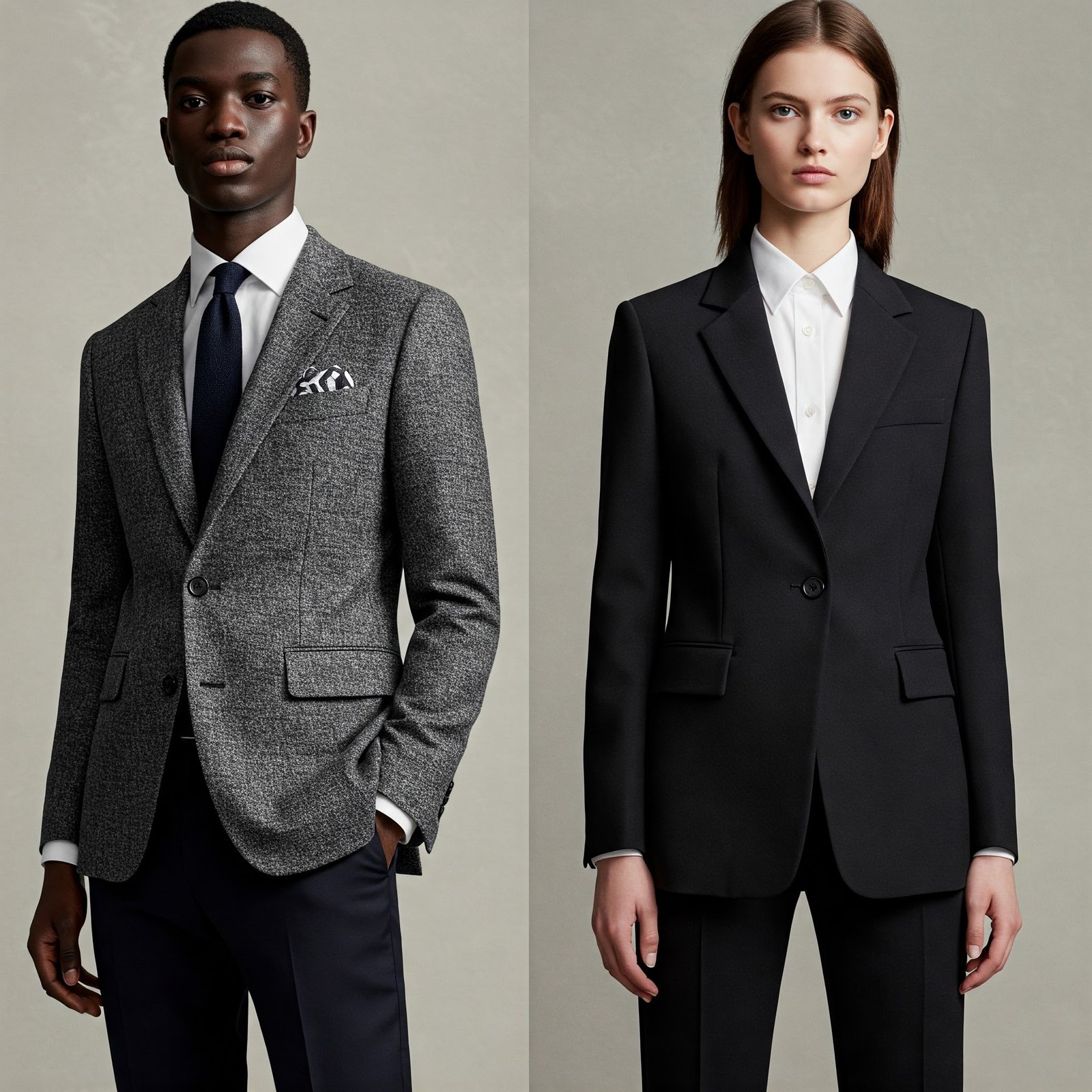
Traditional business formal hasn’t disappeared but has undergone significant reinvention. In corporate environments that still maintain formal expectations, I’ve observed a shift toward what industry insiders call “structured comfort”—garments with the visual authority of formal wear but constructed with technical fabrics that allow movement and breathability.
During a recent visit to a leading financial institution in Mumbai, I noticed executives wearing sharply tailored suits made from advanced natural fiber blends with subtle stretch and temperature regulation. Women’s formal wear featured similar innovations, with traditionally structured silhouettes executed in technical fabrics that resist wrinkles and adapt to body temperature.
“I still need to project authority in client meetings,” explained Vikram, a senior financial advisor, as he showcased his impeccably tailored navy suit that felt remarkably lightweight and flexible. “But I also need to stay comfortable through 12-hour days and frequent travel. This new generation of formal wear makes that possible.” His outfit perfectly captures one of the standout office fashion trends 2025—a seamless blend of professionalism, performance, and comfort.
The Rise of the Structured Comfort Blazer – For Him & Her
In 2025, office fashion is all about smart comfort — and the structured comfort blazer perfectly reflects this shift. Whether you’re dressing for a boardroom meeting or a business-casual day, this versatile blazer on Amazon merges tailored style with wearable ease.
Shop the Look
-
👩💼 Women’s Structured Comfort Blazer: View on Amazon
-
👨💼 Men’s Structured Comfort Blazer: View on Amazon
| Feature | Women’s Blazer | Men’s Blazer |
|---|---|---|
| Fit | Contoured for feminine silhouette | Structured with broad shoulders |
| Design | Slim lapels, cinched waist (sometimes belted) | Notched lapels, double-vented back |
| Colors | Pastels, neutrals, bold solids | Navy, charcoal, beige, earth tones |
| Materials | Stretchy, wrinkle-resistant fabrics | Breathable cotton/spandex blends |
| Styling | Wide-leg trousers or pencil skirt | Chinos or dark denim for business casual |
Key Differences:
✔ Shape: Women’s = hourglass | Men’s = rectangular
✔ Function: Women’s = layering ease | Men’s = structured formality
✔ Trends: Women’s = seasonal colors | Men’s = classic neutrals
Modular Wardrobing Takes Center Stage
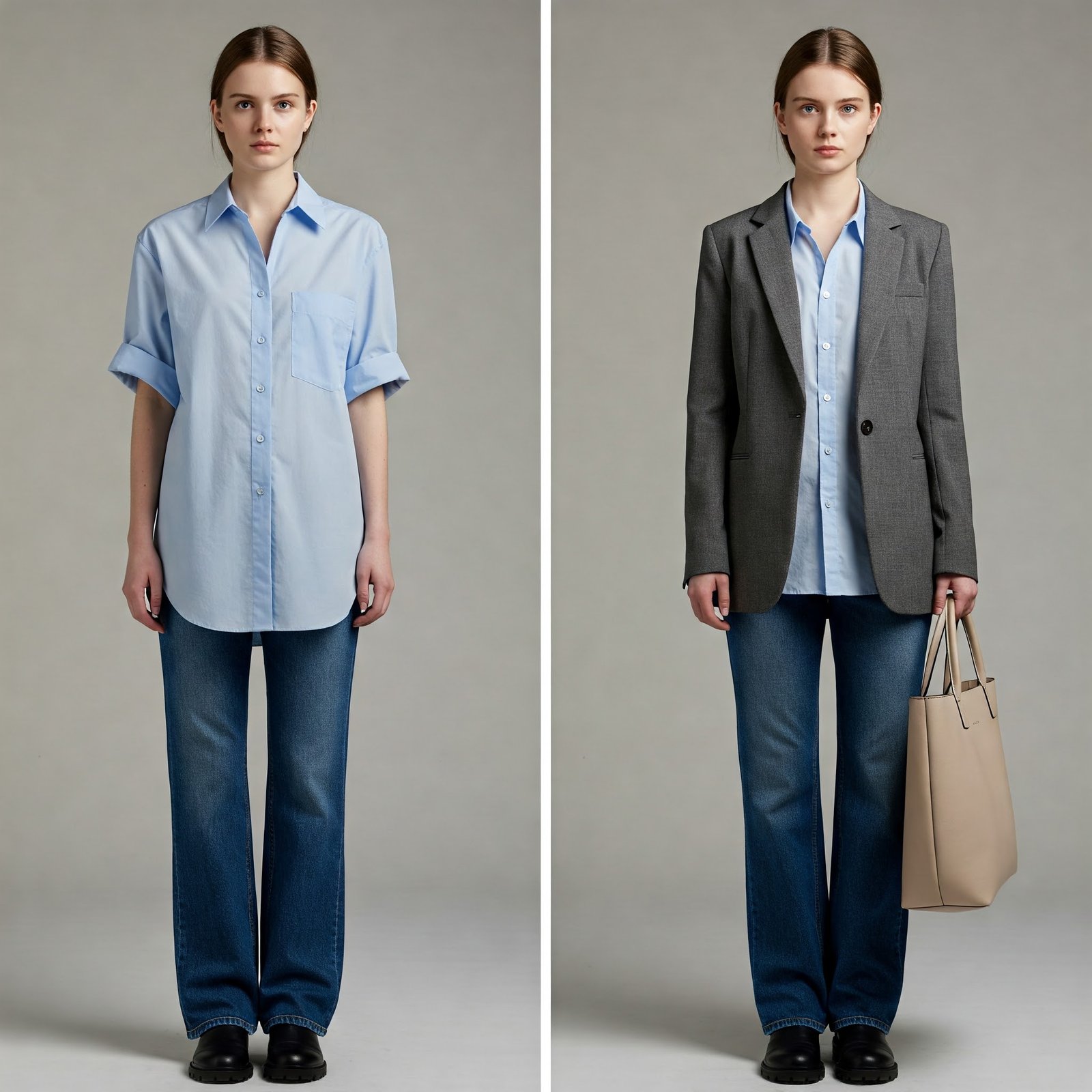
Perhaps the most practical trend I’ve documented is the rise of “modular wardrobing”—coordinated systems of interchangeable pieces that can be reconfigured for different levels of formality throughout the day.
In Bangalore’s tech campuses, I observed professionals wearing cleverly designed separates that transform from casual to formal with simple adjustments. A typical example might include trousers with adjustable details, layering pieces that can be added or removed, and multipurpose accessories that change the overall impression of an outfit.
“I might start my day in team meetings where the vibe is casual, then head into client presentations that require more formality, and finish with creative workshops where I need freedom of movement,” shared Priya, a UX designer whose outfit transformed through three distinct looks during our conversation through the addition and removal of cleverly designed layers.
This approach accommodates the increasingly fluid nature of professional life, where workers move between different contexts and roles throughout their day.
This convertible workwear set on Amazon offers excellent modularity for professional settings.
Conscious Corporate: Sustainability Goes Mainstream
The most significant shift I’ve witnessed isn’t in silhouette or style but in materials and production ethics. Sustainable workwear has moved from niche preference to corporate expectation, with major companies establishing explicit sustainability guidelines for employee attire.
In Delhi’s corporate district, I interviewed HR professionals who shared how their organizations now provide sustainability allowances for workwear purchasing and partner with ethical Indian brands for corporate uniforms and merchandise.
“We recognize that our dress choices reflect company values,” explained Anjali, an HR director at a multinational firm. “When clients and partners visit our offices, they see hundreds of employees whose attire demonstrates our commitment to environmental responsibility.”
The most innovative companies go beyond simply purchasing sustainable items to creating circular systems—hosting office clothing swaps, providing repair services, and establishing end-of-life protocols for workwear.
This ethically produced workwear shirt on Amazon represents this conscious approach.
Heritage Office Wear: Traditional Elements Reimagined
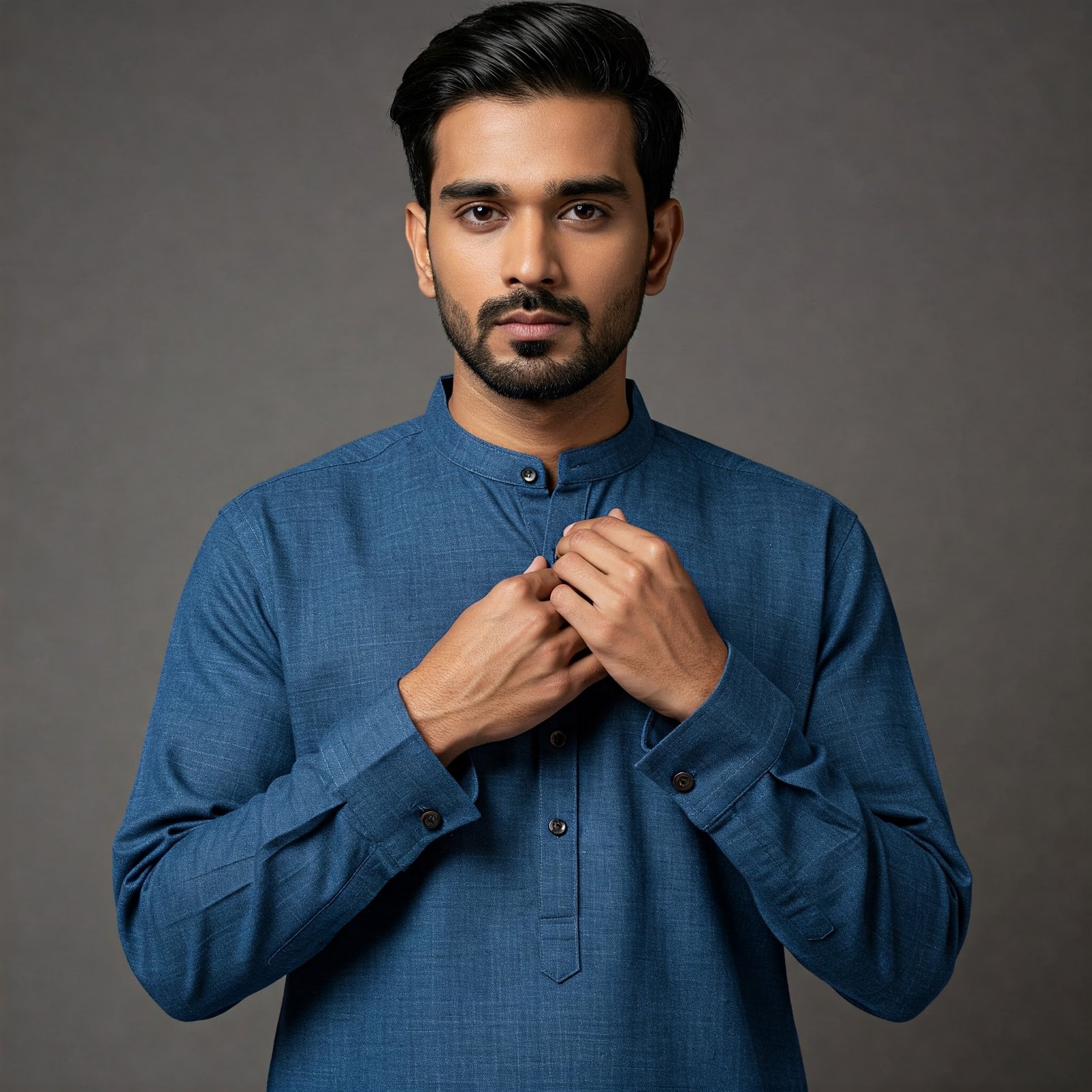
One of the most visually striking trends I’ve documented is the integration of traditional Indian garments and details into contemporary office wear—creating professional attire with a distinctive cultural identity.
In Hyderabad’s financial district, I observed professionals wearing Western silhouettes executed with traditional Indian details like subtle bandi-inspired collars, angrakha closures adapted for business shirts, and contemporary interpretations of regional textiles in office-appropriate weights and finishes.
“Previous generations had to choose between Western professional wear or traditional Indian attire,” noted Arjun, an investment analyst whose custom-tailored shirt featured subtle references to traditional Rajasthani menswear. “We’re creating a new professional aesthetic that honors heritage without feeling like a costume.”
This movement acknowledges that professional appearance standards have historically been Eurocentric and create space for cultural expression within office environments.
This contemporary kurta-inspired office shirt on Amazon shows how heritage elements are being integrated into workwear.
Tech-Enhanced Business Wear Gains Traction
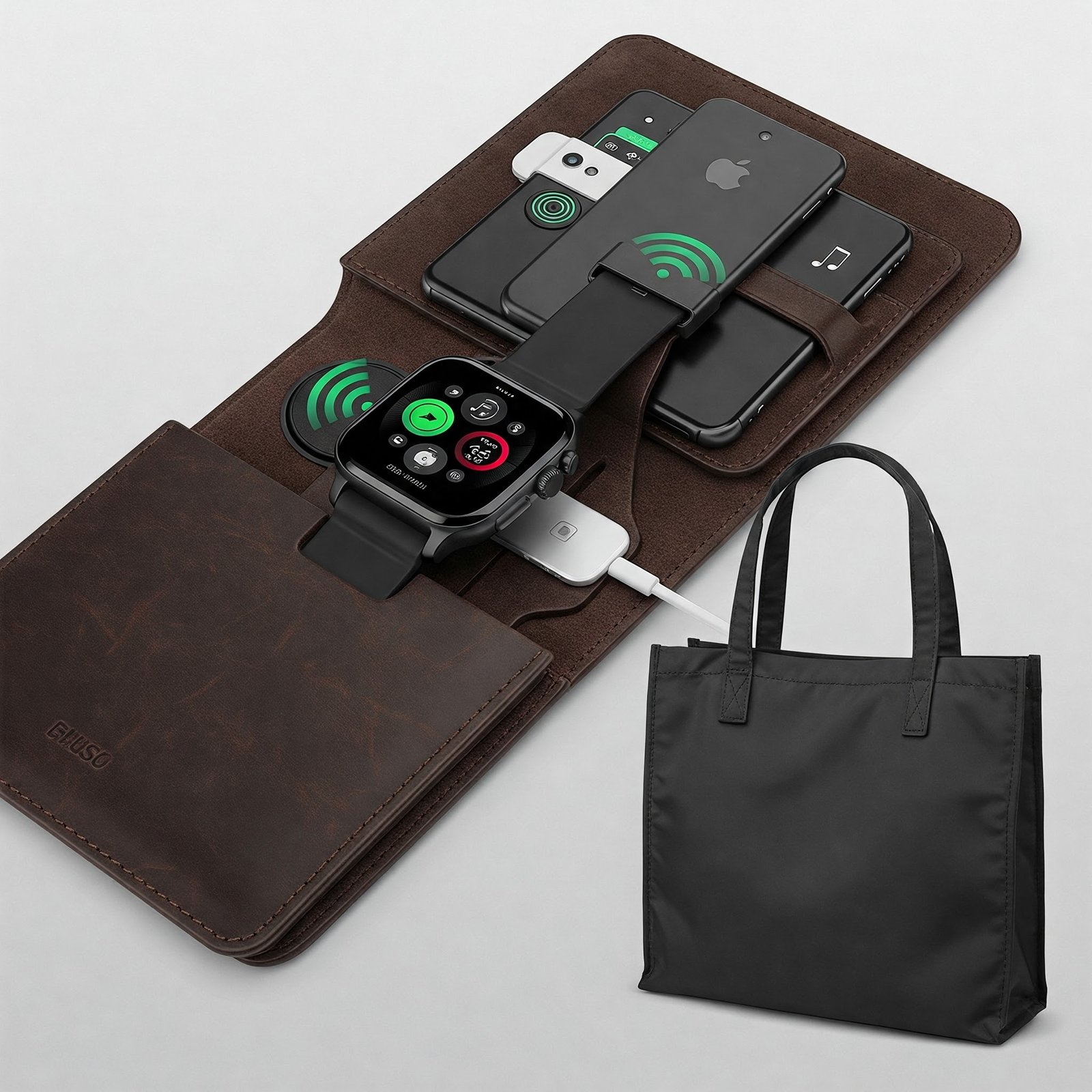
The integration of functional technology into office attire has moved from novelty to necessity, especially in high-pressure professional environments. Workwear with embedded functionality addresses the specific needs of modern professionals navigating demanding schedules.
In Gurugram’s corporate sector, I documented the popularity of garments with subtle technical features—jackets with integrated device charging capabilities, temperature-regulating base layers, and accessories that interface with digital productivity tools.
“The technology doesn’t announce itself—it’s not about looking futuristic,” explained Rohan, a management consultant whose conventional-appearing portfolio contained wireless charging capability for his devices. “It’s about embedding practical solutions into professional attire that still meets appearance standards.”
This trend is particularly evident in industries where professionals must uphold a formal appearance while working extended hours and utilizing technology extensively.
Post-Pandemic Comfort Becomes Non-Negotiable
The comfort revolution that began during remote work has permanently altered expectations for office attire. Even in the most formal environments, I’ve observed that garments that restrict movement or create physical discomfort have been thoroughly rejected.
“We learned during the pandemic that comfort doesn’t equal sloppiness,” shared Maya, a corporate trainer who conducted a session in an elegant ensemble that incorporated elastic waistbands and stretch fabrics. “There’s no returning to the days when professionalism meant physical discomfort.”
This shift has driven incredible innovation in professional wear construction, with traditional tailoring techniques being reimagined to create structured garments that allow freedom of movement. Performance fabrics once reserved for athletic wear are now common in boardrooms, albeit in refined textures and finishes appropriate for professional contexts.
Expressive Minimalism Defines Creative Corporate
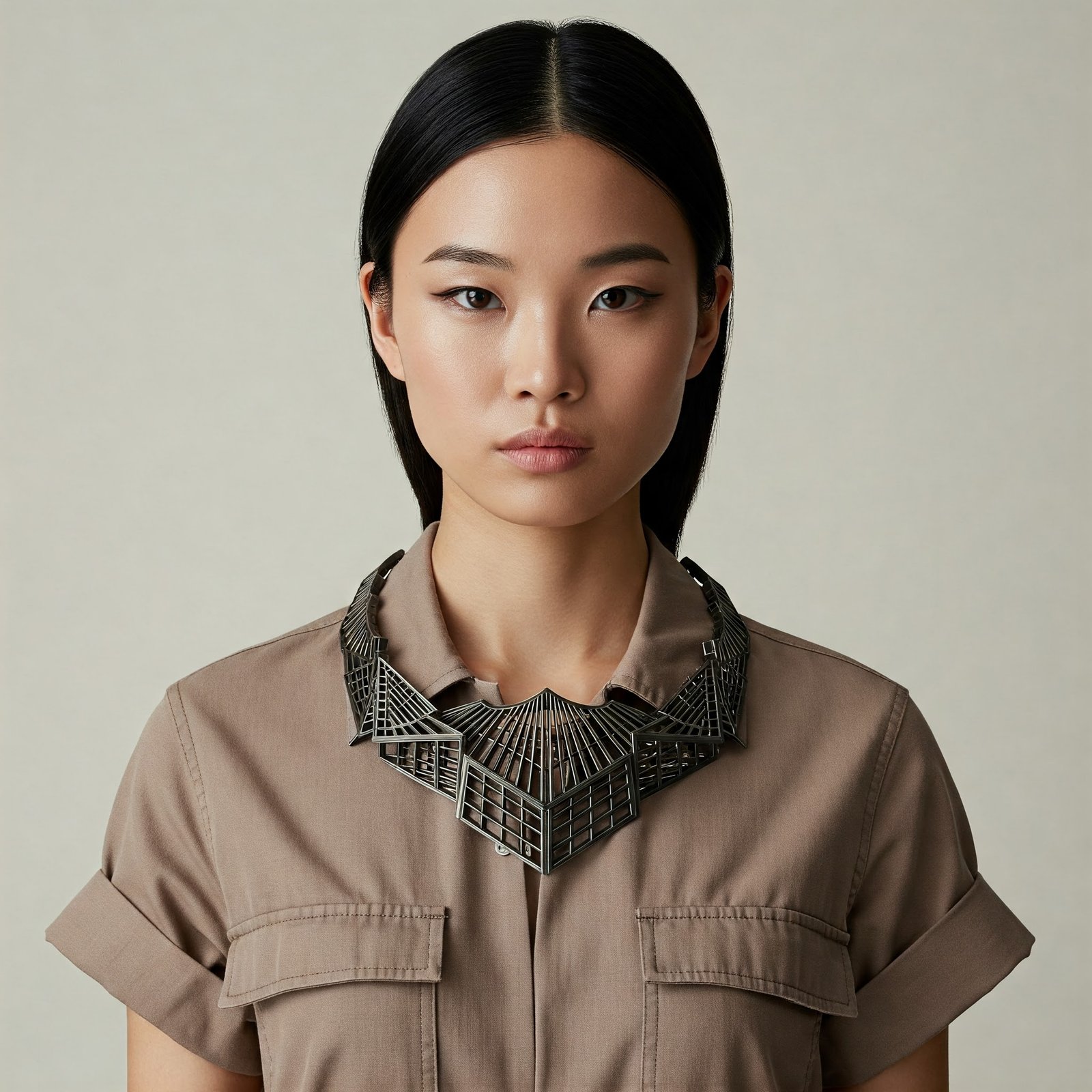
In creative and adjacent corporate environments, I’ve documented the rise of what industry observers call “expressive minimalism”—carefully edited looks with minimal elements but maximum impact.
At advertising agencies and design firms in Mumbai, professionals opt for streamlined silhouettes in neutral palettes but incorporate one or two highly distinctive elements—architectural jewelry, unexpected textile techniques, or bold proportional play—that express individual creativity while maintaining professional polish.
“The old creative professional uniform of ‘all-black-everything’ has given way to something more thoughtful,” noted Divya, a creative director whose simple outfit was transformed by a single dramatically structured accessory. “We’re communicating design sensibility through careful curation rather than flamboyance.”
This approach acknowledges that creative professionals need to express aesthetic awareness while still projecting authority in client-facing roles.
Conclusion: The Era of Professional Authenticity
As I reflect on the evolution of office fashion in 2025, what’s most apparent is how the definition of “professional appearance” has expanded to accommodate greater authenticity. The rigid uniform of corporate life has given way to a more nuanced understanding of how individuals can present themselves with both credibility and personal integrity.
Office fashion trends 2025 are redefining the modern workplace wardrobe by embracing cultural expression, sustainability, functionality, and individuality. Rather than simply leaning into casual wear, today’s trends focus on personalization—curating outfits that reflect both professional roles and personal values.
As workplace norms continue to evolve, success lies in balancing your company’s dress culture with your unique identity. Whether it’s a nod to heritage, eco-conscious choices, or creative styling, office fashion in 2025 is about aligning authenticity with professionalism in a way that feels both fresh and future-ready.
FAQs
What are the key office fashion trends in 2025?
Tailored co-ord sets, smart layering, monochrome outfits, and relaxed-fit blazers are trending in office fashion this year.
Can I still wear casuals to the office in 2025?
Yes! Smart casuals are very much in. Think structured joggers, tucked-in tees, and minimal accessories — polished yet comfortable.
What are some must-have pieces for a modern work wardrobe?
A neutral-toned blazer, wide-leg trousers, crisp button-downs, a belt bag, and stylish loafers or block heels are essentials.


